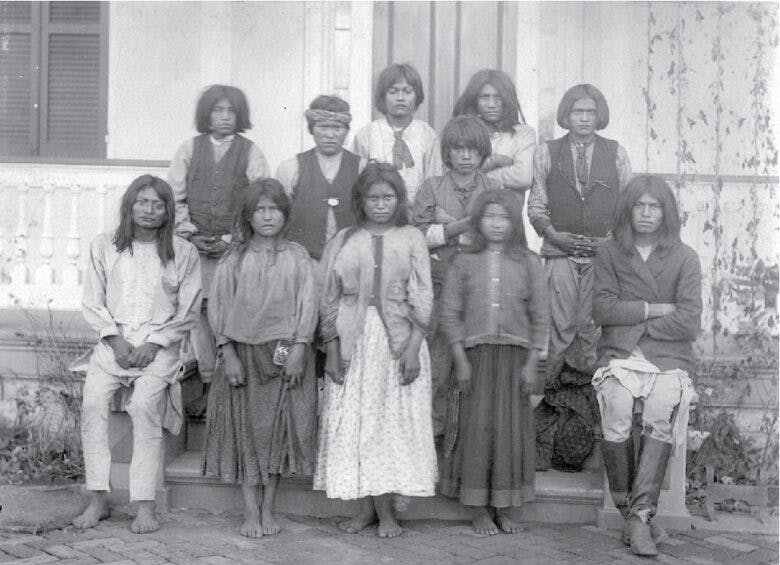Images from the Carlisle Indian School, 1880s
Use this primary source imagery to analyze major events in history.
Suggested Sequencing
- Use this Primary Source after reading the George Custer, Sitting Bull, and the Battle of the Little Bighorn Narrative for context on how the expansion of the United States westward affected American Indians. With The Dawes Act, 1887 Primary Source, this source will to allow students to analyze the effect the push for assimilation had on American Indians.
Introduction
After the Civil War, people headed west beyond the Mississippi River by the millions. As they moved, they encountered diverse American Indian groups who had lived in these regions for generations. Some were members of eastern tribes such as the Cherokee or Creeks who had been forcibly resettled, whereas other tribes had always lived in the West. As the numbers of Anglo-American migrants increased, so did violence with American Indian groups who saw these settlers as encroachers on their land. In addition, U.S. military victories and the passage of the Dawes Act in 1887 severely weakened American Indian resistance to the increasing number of Anglo-American settlers. In the 1880s, the federal government adopted a policy of assimilation of American Indians by focusing on educating the youth. The Carlisle Indian School in Pennsylvania, founded by Captain Richard Henry Pratt in 1879, was created with the goal of assimilating American Indian youth through education. Pratt subscribed to the principle “kill the Indian [in him] and save the man.” At Carlisle, young boys and girls were subjected to a complete transformation. If they exhibited any “Indian behaviors,” they were punished. “Before” and “after” photographs were used as proof of the success of the Carlisle model. Study the “before” and “after” photographs before answering the questions that follow.
Sourcing Questions
- Briefly describe the context for relationships between American Indians and Anglo-Americans after the Civil War.
- (Figure 1) (Figure 2) The photos are of Apache children who attended the Carlisle school. Why were these “before” and “after” photographs taken?

Figure 1: Eleven Apache boys and girls pose outside the Carlisle Indian School after their arrival in 1886.

Figure 2: The caption above the boys and girls reads, “Chiricahua Apaches Four Months After Arriving at Carlisle” and lists their names underneath.
Comprehension Questions
- (Figure 1) List at least three adjectives to describe the children in this figure.
- (Figure 2) List at least three or more adjectives to describe the children in this figure.
- (Figure 1) (Figure 2) Based on these images, how had these children’s lives changed in four months?
- What additional historical information would you need to fully answer question 2?
- (Figure 2) Note that children’s names are listed under the image in Source B. How do these names reveal the process of assimilation?
Historical Reasoning Questions
It is a great mistake to think that the Indian is born an inevitable savage. He is born a blank, like all the rest of us. Left in the surroundings of savagery, he grows to possess a savage language, superstition, and life. We, left in the surroundings of civilization, grow to possess a civilized language, life, and purpose. Transfer the infant white to the savage surroundings, he will grow to possess a savage language, superstition, and habit. Transfer the savage-born infant to the surroundings of civilization, and he will grow to possess a civilized language and habit. — Captain Richard Henry Pratt, founder of the Carlisle Indian School, 1892
- According to Pratt, what is his goal in opening the Carlisle Indian School?
- Can these images be used as proof of the success of his goal? Explain.
